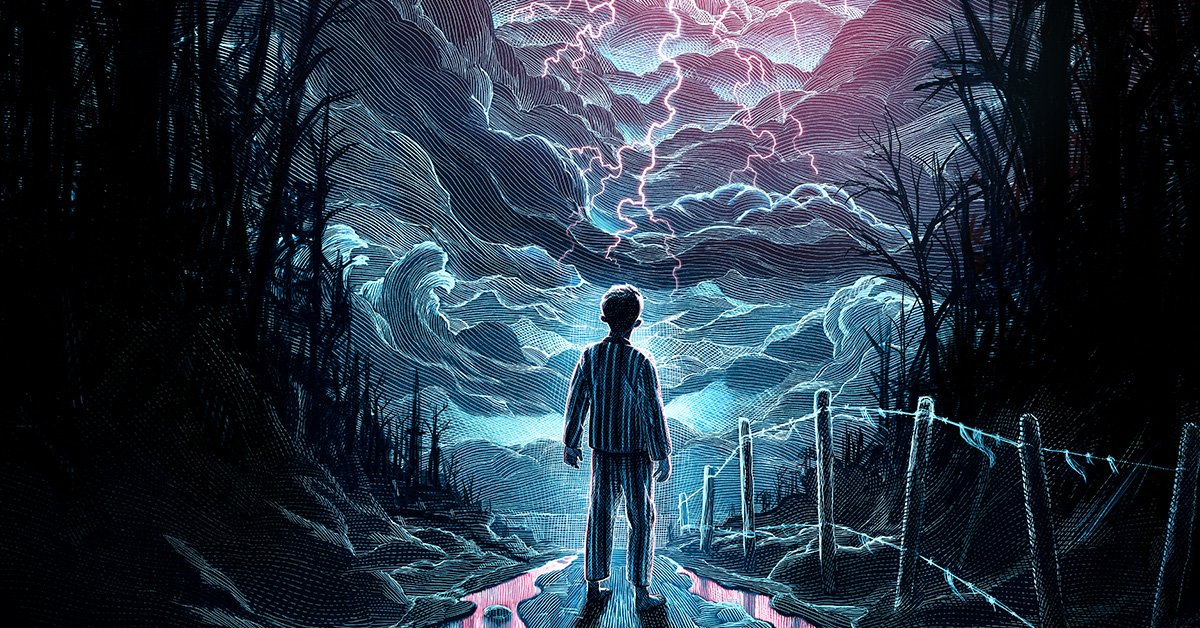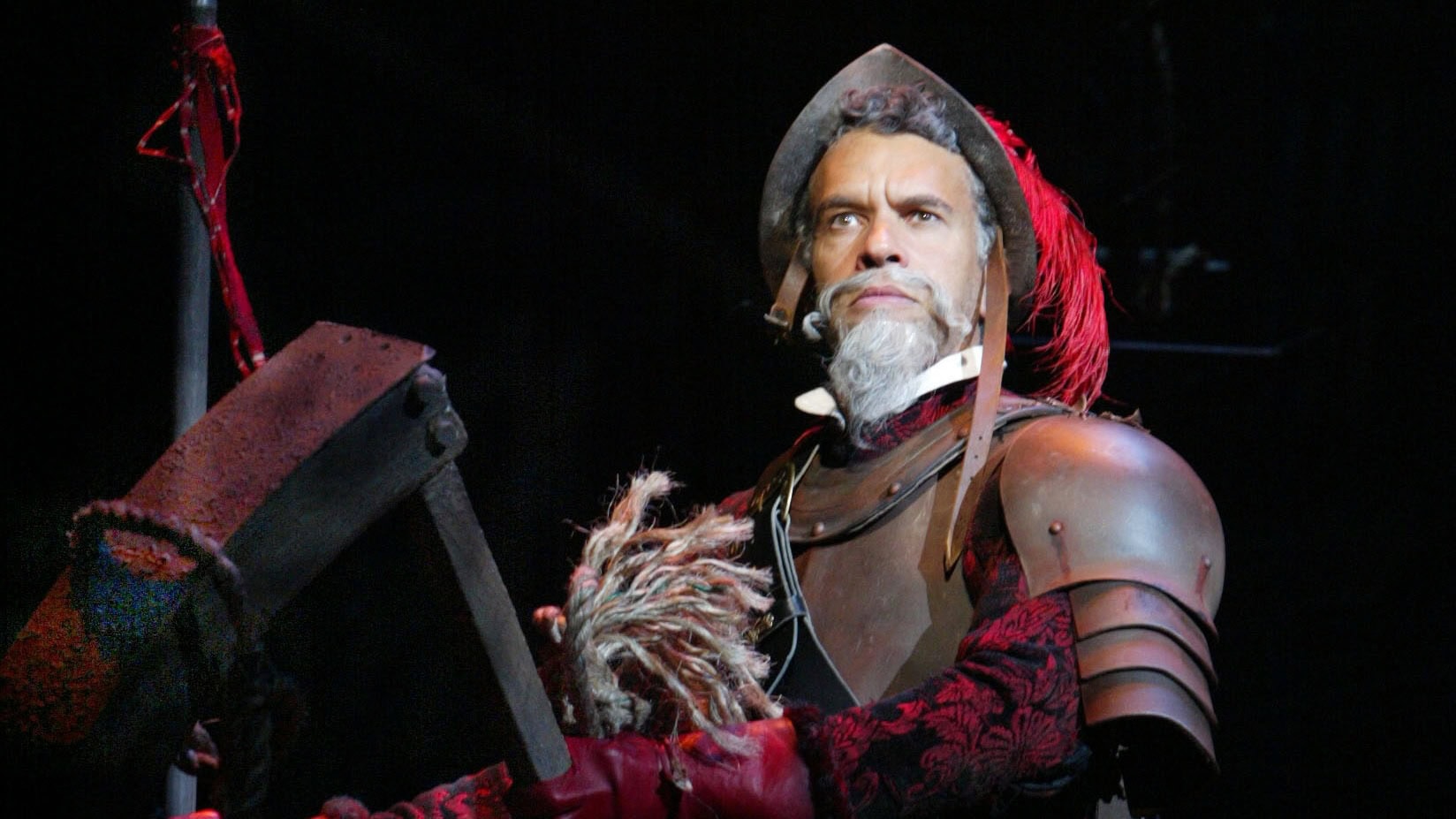
The Ocean at the End of the Lane (UK), originally created by Neil Gaiman, has now been adapted for the stage by playwright Joel Horwood. The play is a thrilling feat of storytelling in which fantasy, sci-fi, myth and imagination combine in an adventure that unfolds right here, in our world. We asked Joel about the challenges of transferring Gaiman’s vivid story from page to stage, and about his experiences working with the author and the creative team at the National Theatre.
What inspired you to adapt Neil Gaiman’s fantasy novel The Ocean at the End of the Lane for stage?
I can’t take credit for the initial idea – in fact, I’d never read any Neil Gaiman until the National Theatre sent me the book. The idea began with Samuel Wyer (costume and puppet designer). He suggested the book would make a great play to his friend, Katy Rudd (director), who pitched it the National Theatre. So the project began as a story passed between old friends before it arrived with me, which seems thematically relevant!
When I sat down to the read the book, I didn’t get up again until I finished it (except for a loo break and a cup of tea). I loved its mystery, the tasks and trust it gave me as a reader, I found it incredibly moving to be able to read a story that was at once a game of let’s pretend – which is all theatre is, really – and a memory. It felt like it was giving me the story of a struggle against an inter-dimensional, parasitic, shape-shifter as well as the story of a young boy trying to reconcile himself to an unknowable world AS WELL AS the story of an adult trying to come to terms with loss. Partly because of theatre’s ability to tell multiple narratives simultaneously, the story felt immediately theatrical. But it was probably the thriving, beating heart of the thing that grabbed me the most. From the moment I put it down I wanted to lose myself in the experience the book as a show, and I wanted to be a part of making that happen.
What were the challenges of transferring the fantastical and sci-fi elements from page to stage?
There were so many! How do you tell the story of a magical little girl ‘binding’ an enormous monster? How do you realise the boy swimming in an ocean which is also the synaptic fluid of the multiverse? How about Hunger Birds eating the universe? But of course, the challenges taught us what the show should be. At its heart, Neil Gaiman has written a book that operates with the rules of play. Lettie asks the boy to believe that she has an ocean in the bucket that she brings to him, the game between them relies on a similar leap of faith to that of engaging in a piece of theatre. So with the combined genius of Steven Hoggett (movement director), Jamie Harrison (magic and illusions director and designer) and Katy Rudd, we were able to come up with our theatrical magic that thrives with as a result of these challenges.
Could you tell us more about the creative process and working with Katy Rudd, the director of the National Theatre production?
The brilliant thing about working at the National Theatre is that there is time and space to properly collaborate. Whilst I was working on the text, Katy worked in tandem to develop the theatrical language. This meant that I could rely Katy to absolutely deliver on stage directions such as ‘They begin to eat the universe’ in a way that wouldn’t just achieve the incredibly difficult work of illustrating the moment for narrative purposes; but she would find ways to deliver them with a thematic punch as well. Perhaps the most moving moment in the show is Katy’s idea for how we ended up realising ‘The Ocean’; something that absolutely delivers on the theme of ‘play’ whilst also landing the story. So whilst I was fretting away with structure and exposition, Katy was experimenting with puppets and movement sequences, which has made for a production that is entirely integrated with the text. What’s particularly brilliant about Katy is that she is always trying to deliver the most impactful theatrical moments and she does not stop. It feels as if the show she made in the Dorfman Theatre in 2019 was the foundation for what became the West End show (2021-22), and now she is finding ways to top that production all over again with this UK and Ireland tour (2022-23).
What was it like to meet and work with Neil Gaiman?
A genuine honour! The opportunity to adapt something is also the chance to collaborate with someone remotely and on an incredibly personal level – you’re literally under the bonnet of a story, fiddling around with something that the author has lived, breathed and excavated their soul in order to wrestle into existence. When you’ve added yourself to that piece of work, it feels a little like you have gotten to know an essential part of the author… and then scrawled all over it. Even when you’re proud of the work you’ve done, when the author arrives to hear or see it for the first time, it feels a little like that moment in a renovation-reveal TV show when the family arrive back at home to see just what you’ve done to their house. I half expected Neil to throw his notepad at me. But of course, whilst I was a mumbling, star-struck mess, Neil was wonderfully generous, humble, excited and helpful. His insights were always facilitating the story in its new form and were never, at any point, restrictive or prescriptive. It was really, genuinely inspiring to be able to collaborate with a once-in-a-generation storyteller. I’m very proud.
Are there any other playwrights or theatremakers who have inspired your writing and the kind of work that you want to make?
So many! Enda Walsh, Sarah Cane, Hofesh Shechter, Kae Tempest, Simon Stephens, Caryl Churchill, Crystal Pite, Shakespeare, Maria Aberg, Lloyd Newson… way too many to list here without blowing my word count, but perhaps the most revealing answer to this is that I came to writing through a side-door, really. The first thing that ever made me feel like theatre was the most incredible, intoxicating, moving and powerful medium it was possible to work in (for me at least) was a piece of dance-theatre (though that doesn’t quite cover it) by the late, great Nigel Charnock called Heroine. Combining images, gestures, exhaustion, direct address, this work cut me to the core with its themes of grief and memory and the lasting impact of childhood heroes; all of which feels suddenly very relevant to Ocean – including the use of physicality!
I’ve been lucky enough to enjoy a really varied journey with my writing; I’ve loved devising work with Secret Theatre or with Emma Rice’s Wise Children, writing pantos for The Lyric in Hammersmith as well as plays for rural tours with Pentabus and Eastern Angles. So I think the kind of work that I want to make requires a thematic answer – I love making work that is self-aware, that trusts audiences and that has something important and relevant at its heart.
Do you have any advice for theatremakers looking to stage the play in future?
The only advice I’d give is to embrace the idea that thea
tre is, necessarily, make-believe. When we consider what theatre does that no other medium can, I think that’s when we make the most exciting work. And this story, perhaps more than most, demands to live and breathe.
What do you want audiences to take away from the show?
I always find this a tough question to answer because, if I could sum it up, I don’t think I’d have been able to write a play about it. So I’m hoping that the show delivers a swathe of complex and wonderful things that an audience can take away and discuss and mull and sit with whether that’s a ‘how did they do that bit?’ kind of a thought or more of a ‘I should call my Mum more often’ thematic thing. But perhaps what I hope it does most is help audiences to appreciate the people they have with them. But perhaps now, after seeing the show quite a few times, I can say that I really just want audiences to get a really good hug out of it.
…
The Ocean at the End of the Lane is on tour in the UK and Ireland from 12 December 2022 to 30 September 2023. Find a theatre near you on the official tour website, or for more information about purchasing the script, visit Concord Theatricals UK.
Header Image: Cover artwork of The Ocean at the End of the Lane (Cover artwork by Nicolas Delort. Original artwork design and art direction by National Theatre Graphic Design Studio.)

“The Impossible Dream” – An Anthem of Hope

In the Spirit: Plays and Musicals Based on A Christmas Carol

